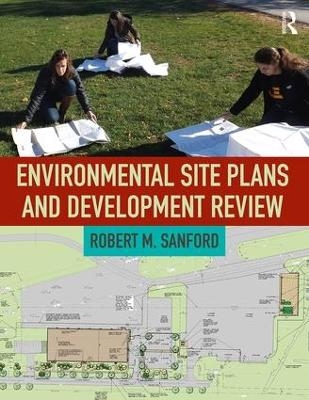
Environmental Site Plans and Development Review
Left Coast Press Inc (Verlag)
978-1-62958-478-2 (ISBN)
Environmental review is not an easy task, even for consultants and professional planners. There is a need for a general guide that presents the design, infrastructure, and environmental issues to address, what a reviewer needs to know about these issues, and how to interpret them. The book points the reader to accessible, low-cost resources to aid in the review process. In these times of climate change, rising populations, energy challenges, and economic turmoil, there is a real need for development to occur in as efficient and environmentally-responsible a manner as possible. Citizen review is a critical step in the approval, alteration, or denial of site plans for land subdivision and new development. Hence, informed participants in the review processes are more important than ever.
This book is designed to assist professional archaeologists, environmental consultants, and others interested in construction, development and other physical land alteration that must go before some sort of review board. The book is also suitable for college undergraduates and graduate students in fields that bring them into environmental development of sites. And it is useful for neighbors and other members of the public who want to understand proposed land development in their neighborhood.
Robert M. Sanford is Professor of Environmental Science & Policy and Chair of the Department of Environmental Science & Policy at the University of Southern Maine in Gorham, Maine. He has a Bachelor’s degree in Anthropology from State University of New York College at Potsdam and a Master of Science and PhD in Environmental Science & Planning from the State University of New York College of Environmental Science & Forestry at Syracuse. He is the author of Reading Rural Landscapes, and the co-author of Cultural Resources Archaeology, Practicing Archaeology and other books.
Introduction; I: An Overview of the Subdivision and Land Development Process; 1: The Review of Subdivision and Land Development Plans; 2: Selection and Review of the Site Location; 3: The Content of the Site Plan; II: Elements in the Review of Site Plans and Development Proposals; 4: Air Quality and Site Plan Review; 5: Water Resources; 6: Water Supply; 7: Soils, Soil Erosion, and Topography; 8: Septic Systems; 9: Traffic; 10: Energy; 11: Public Services; 12: Aesthetics; 13: Noise Impacts; 14: Historical and Archaeological Resources; 15: Plants and Wildlife; 16: Agriculture and Forestry; 17: Coastal Resources; III: Summary; 18: Successful Site Design and Review
| Erscheinungsdatum | 12.07.2017 |
|---|---|
| Zusatzinfo | 47 Tables, black and white |
| Verlagsort | Walnut Creek |
| Sprache | englisch |
| Maße | 191 x 254 mm |
| Gewicht | 635 g |
| Themenwelt | Naturwissenschaften ► Biologie ► Ökologie / Naturschutz |
| Technik ► Architektur | |
| Technik ► Bauwesen | |
| Wirtschaft ► Volkswirtschaftslehre | |
| ISBN-10 | 1-62958-478-9 / 1629584789 |
| ISBN-13 | 978-1-62958-478-2 / 9781629584782 |
| Zustand | Neuware |
| Haben Sie eine Frage zum Produkt? |
aus dem Bereich


